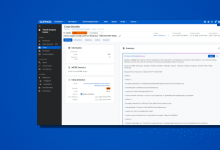AI enters production systems even as ‘trust’ emerges as a growing concern

Other top priorities for AI adoption included improving innovation and idea generation (30%), improving goods or services (30%), improving citizen or customer experiences (29%), and detecting and assessing cyber risk (26%).
Additionally, 57% of respondents at public sector organizations and 65% at private sector organizations were confident that their organization will be prepared to leverage AI to advance their missions or business strategies within a year. Just 11% and 12% of public and private sector respondents said it would at least take two years for their organizations to do so.
The top obstacle to AI adoption and expansion remained “building trust in AI systems,” with 48% in the public sector and 44% in the private sector being reluctant over data privacy and security concerns.
Regulatory concerns loom amid growing benefits
One of the leading (80%) benefits of AI was observed to be its use to address cybersecurity priorities. These include AI-enabled monitoring (34%), risk assessment (33%), and analysis of threat data (29%).
The study also revealed that private sector respondents are significantly more likely than those in the public sector to report the use of AI technology to analyze threat data (35% versus 22%), improve productivity (30% versus 17%), generate code (22% versus 7%) or analyze OT data (20% versus 9%).
“Some of the areas where I see AI playing an active role include vulnerability identification, threat detection, attack prevention, user behavior analytics, entity analytics, big data security analytics, risk, governance, identity management, and other areas,” said Pankit Desai co-founder and CEO of Sequretek.




